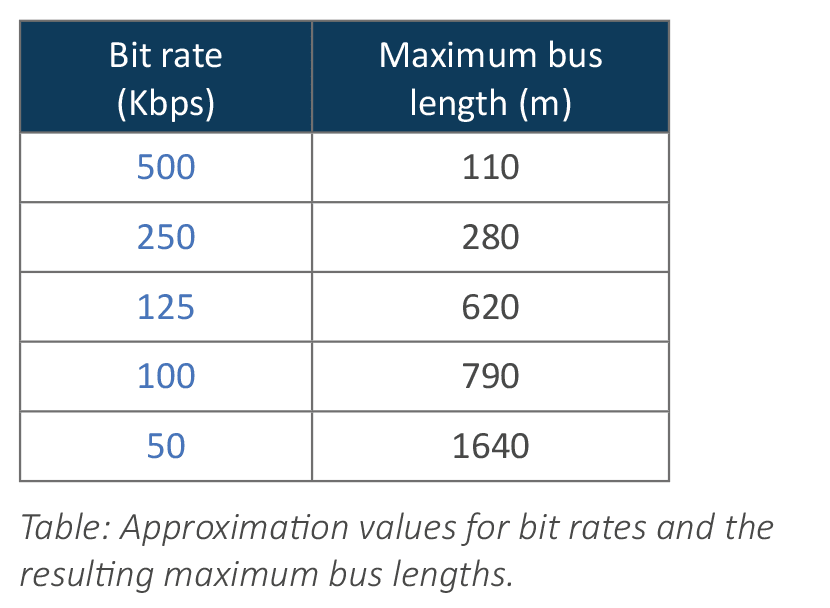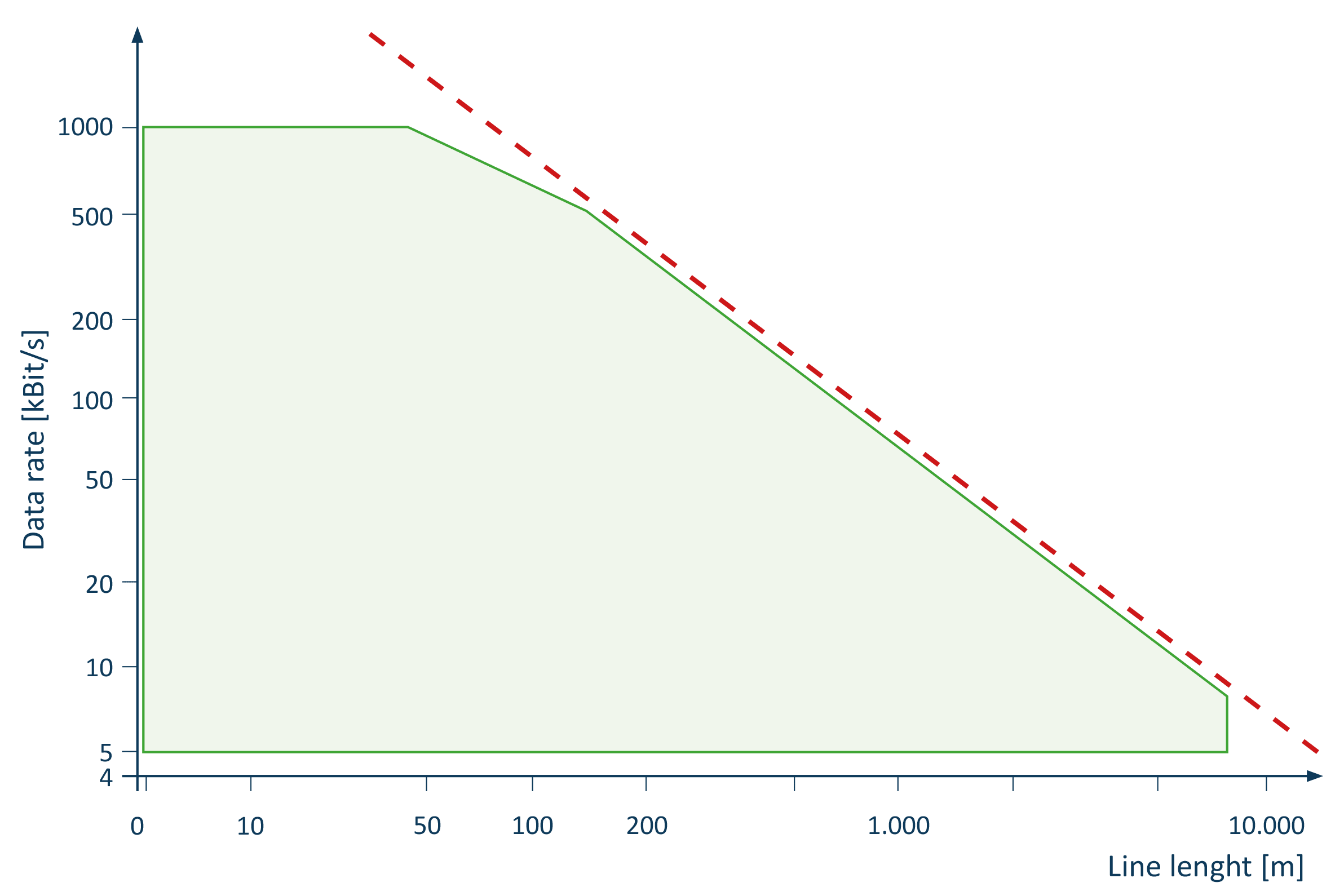
Because of the arbitration mechanisms used with CAN (FD), the maximum bus length is limited and decreases with increasing CAN bit rate. The arbitration is the reason for this. The participants figure it out among themselves who may send their message. During this process, there must be a uniform signal level for all participants. This is the only way they can all have the same basis to decide whether they may send or, if the arbitration was lost, whether they switch to listening.
The CAN signals propagate on the bus at nearly lightning speed. This can sound very fast initially. CAN, however, can be operated at a CAN bit rate of 1 Mbps. Delays of the transceivers and the protocol modules must also be taken into consideration and the whole bit cannot be used for sampling due to the often unclean edges. If you take these circumstances into consideration, this results in line lengths that range between 60 and 1,000 meters, depending on the baud rate.

For line lengths of more than 100 m, you can specify the maximum product using the CAN bit rate and line length as a rule of thumb:

Besides the pure cable length, the use of electrically isolated bus interfaces also shortens the bus length since such interfaces have to be treated as having a cable length of 10 m.
If the maximum length is exceeded, the bus must be segmented using CAN bridges or gateways. CAN repeaters cannot be used in this case since they transmit the bus signal directly, meaning that the segments separated by the repeater have to be counted as part of the main bus for signaling purposes. CAN repeaters with galvanic decoupling reduce the bus length by 30 meters.
Ratio of CAN bit rate or data rate to line length as graphic:

The dotted line shows the rule of thumb for data rates < 400 kBit/s or for line lengths > 100 m. The green area shows the permissible use without taking other electric propagation times or other restrictive parameters into consideration.
In summary, it is evident that higher CAN bit rates lead to shorter permissible line lengths due to the requirement of uniform signal levels during arbitration. A segmentation of the network using CAN bridges or gateways can be used to overcome the limitations.